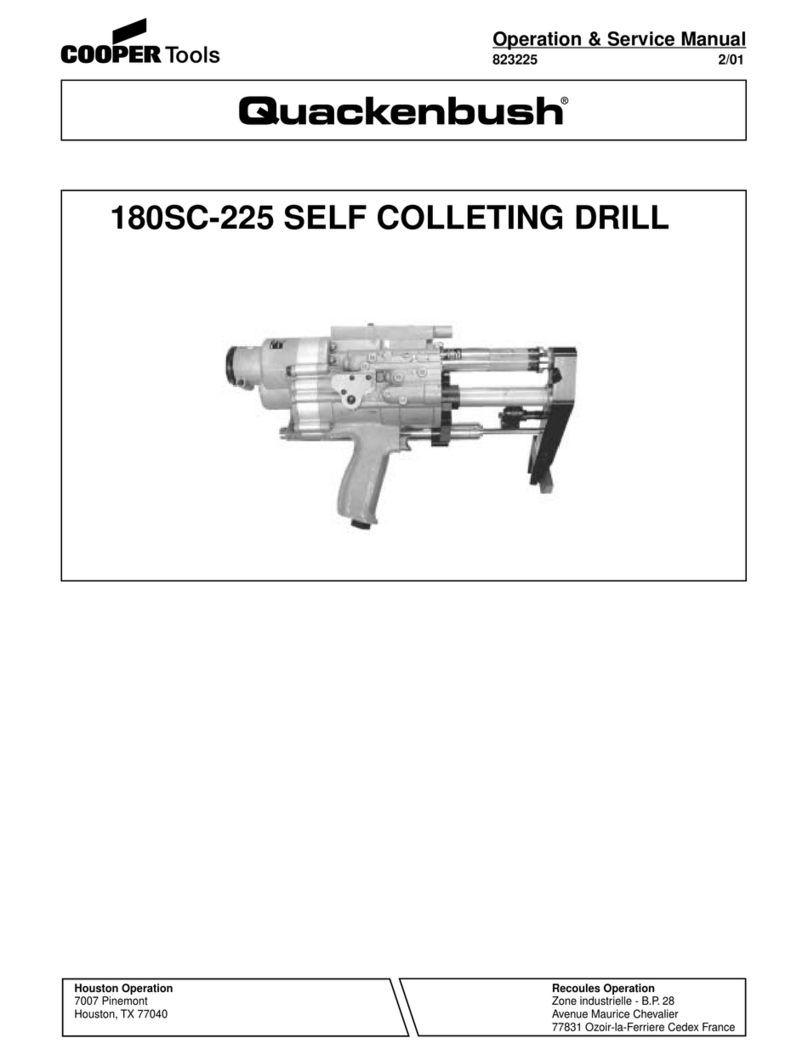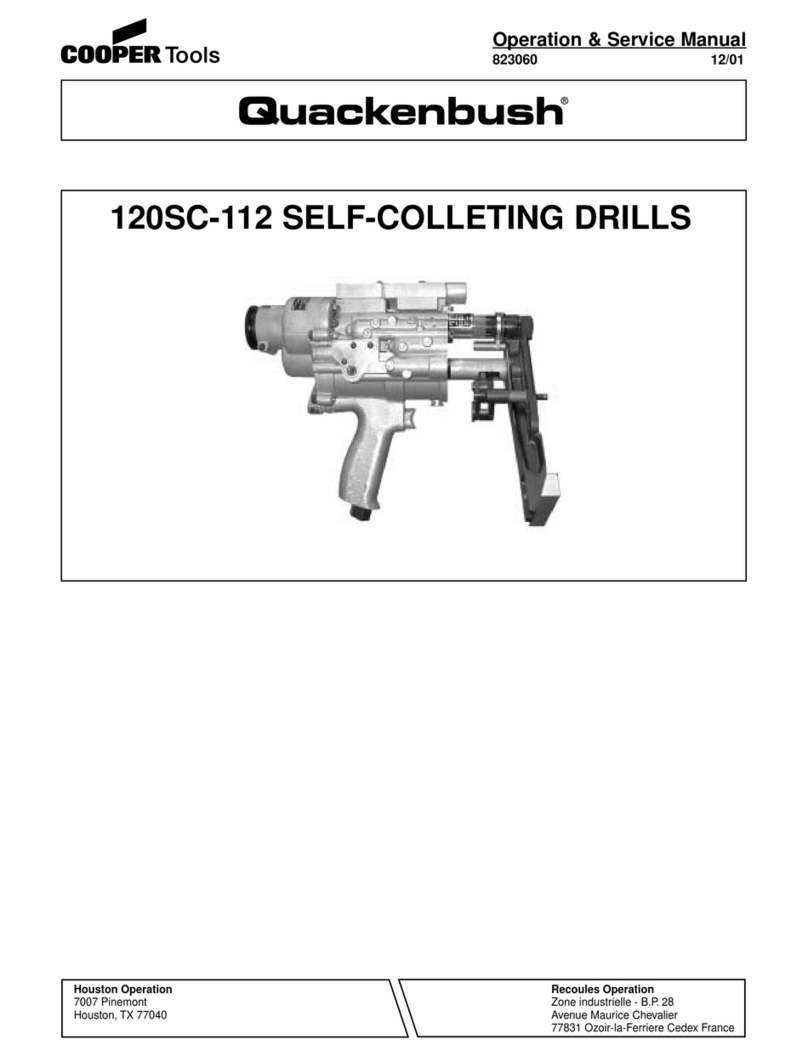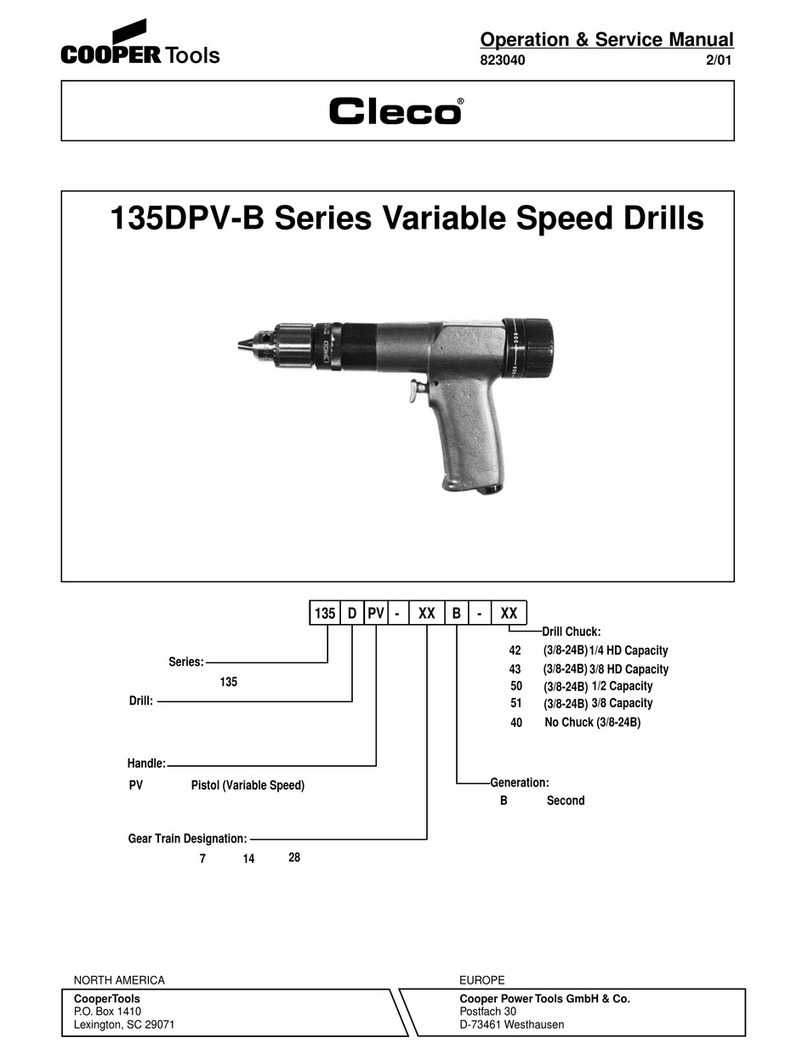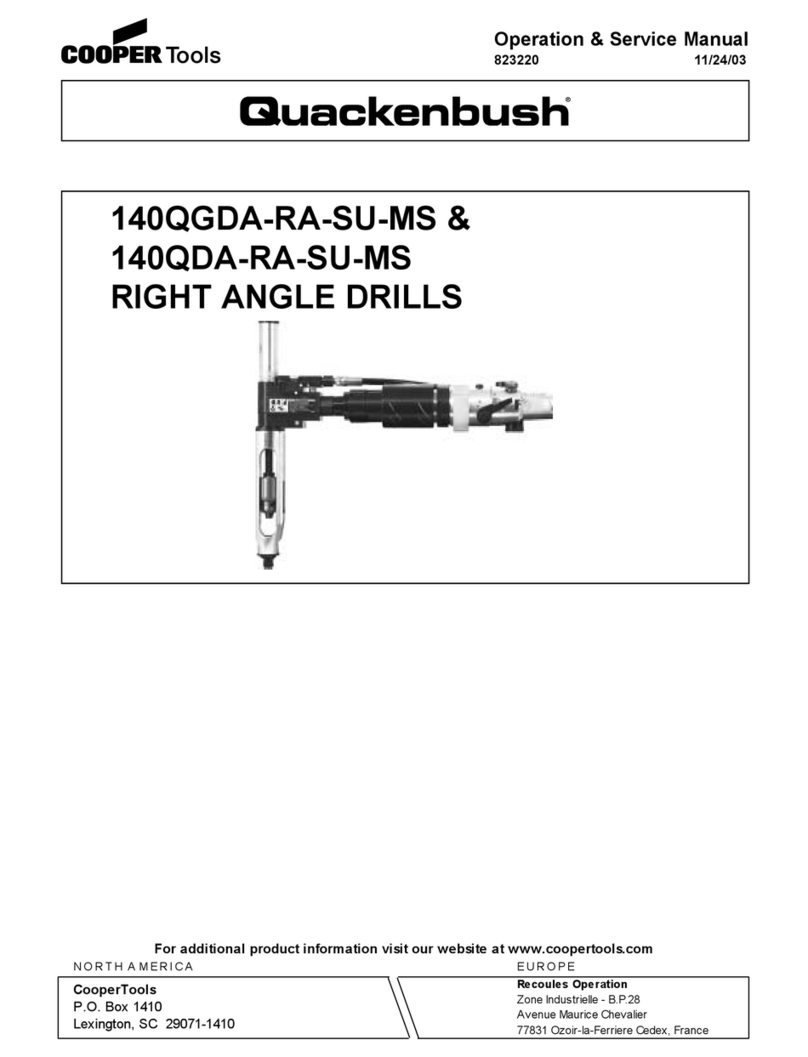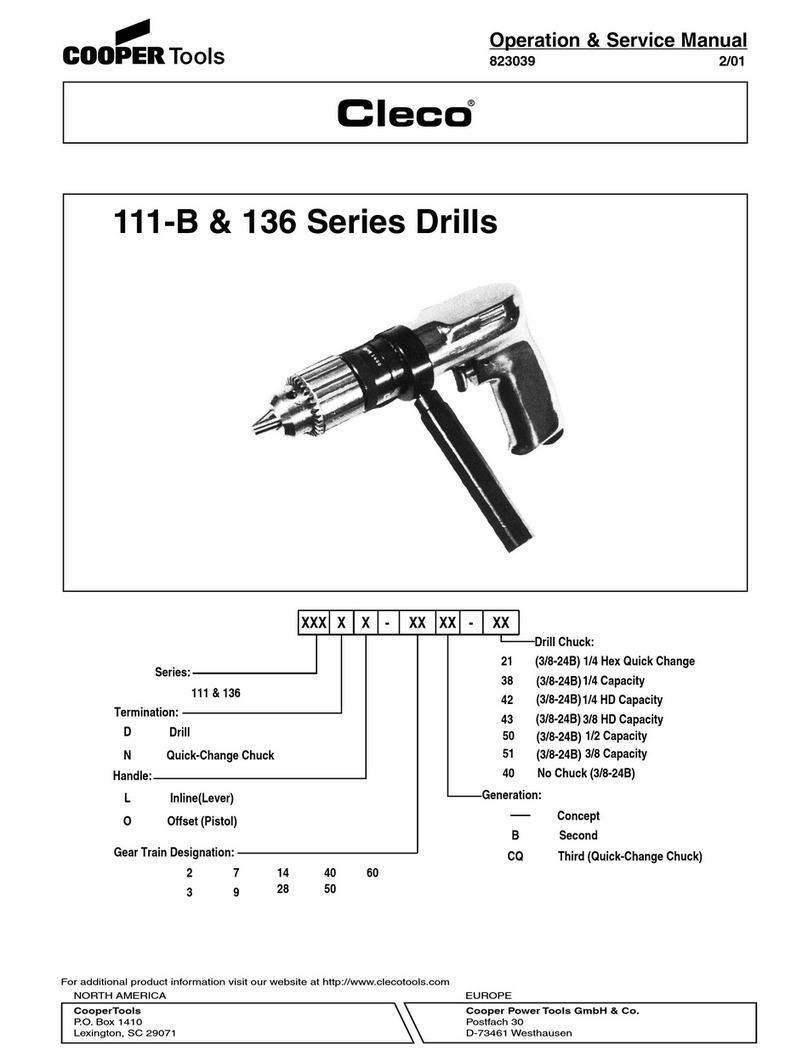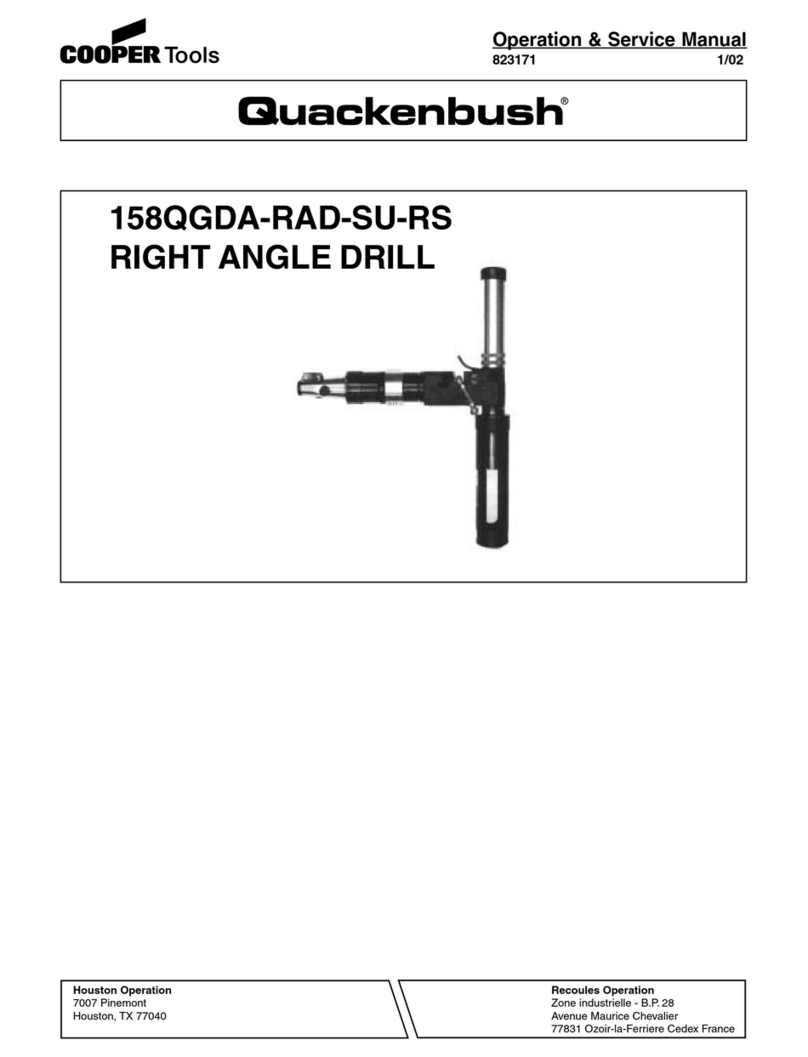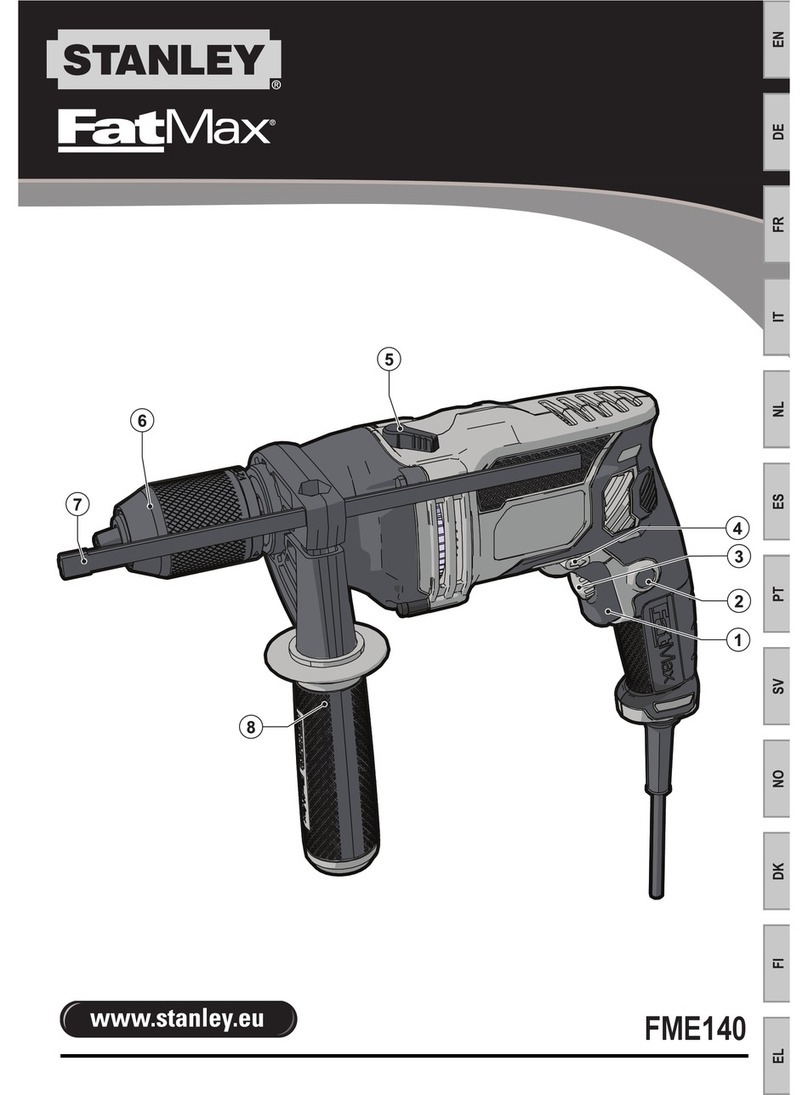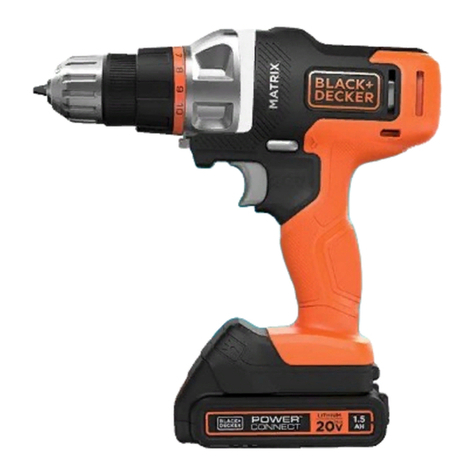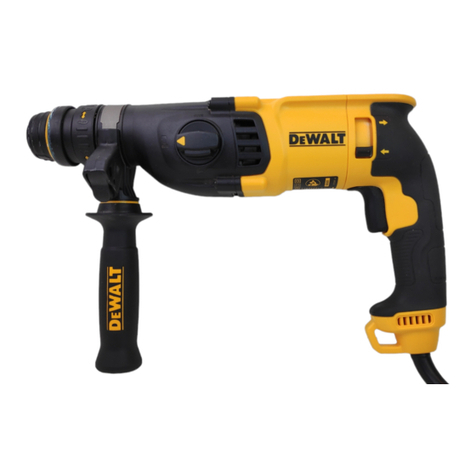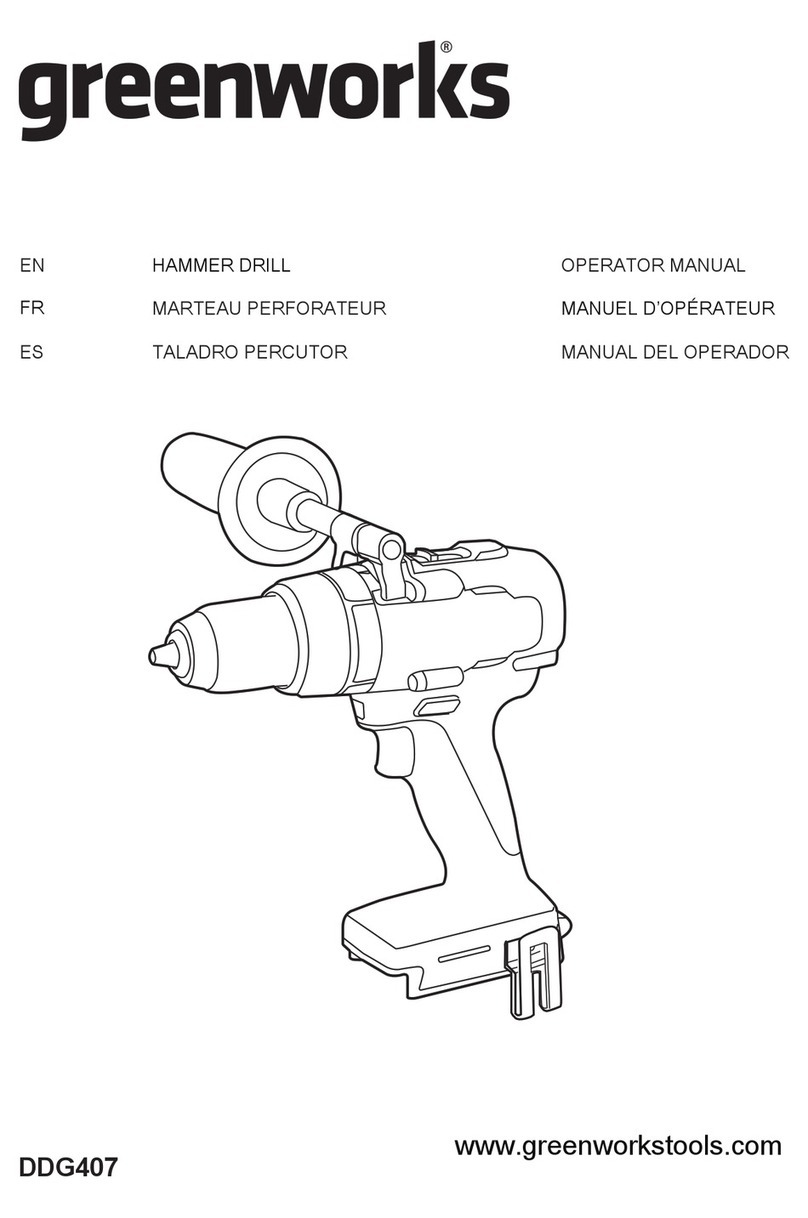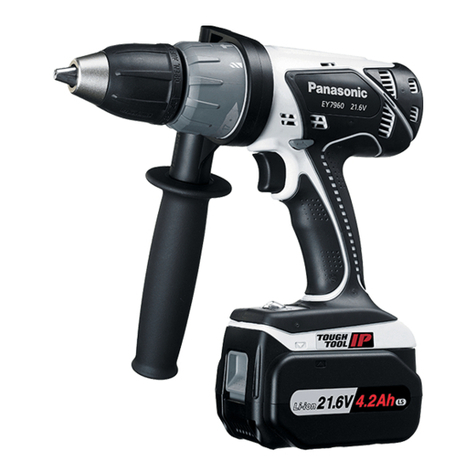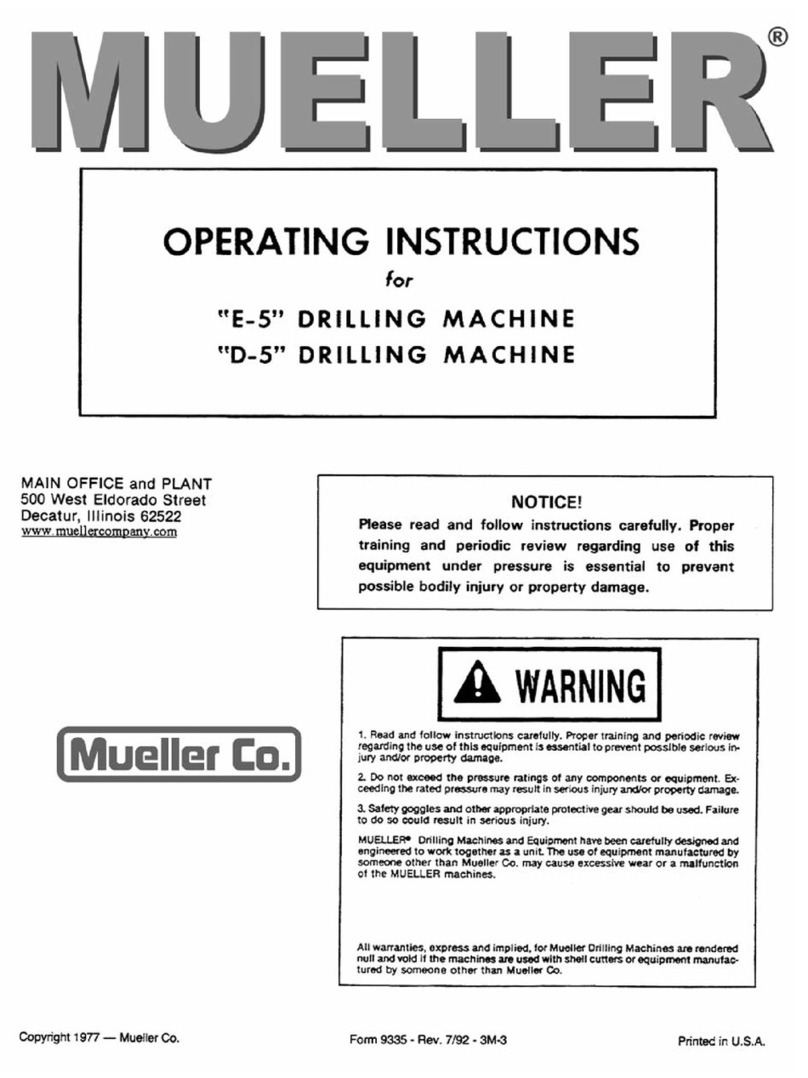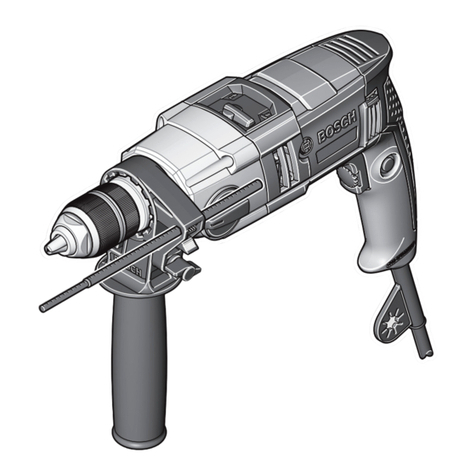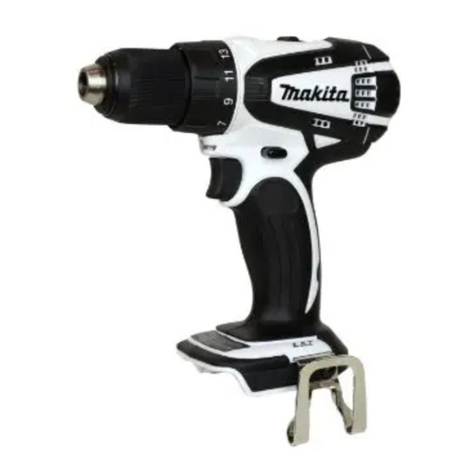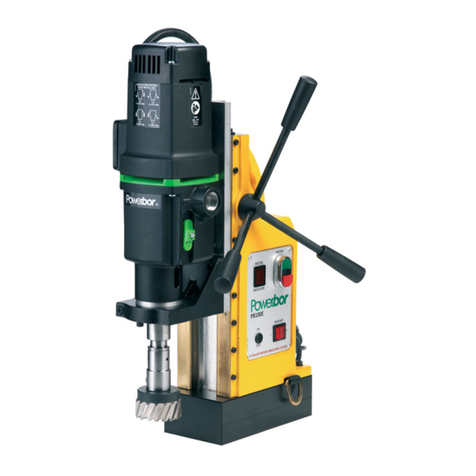
4
l. Connect air to drill and feed in spindle (627134). Install
stop (617962), spindle guard and cap (627118, 624355).
2. Disconnect air from tool, reshim throttle body so the
plugged hole points sideways. (preferable 60° from hori-
zontal - see assembly drawing). Remove swivel inlet bush-
ingand replace withwasher(627106)and bushing (625560)
includinginternal "O"-ring. Remove plug fromthrottle body.
3. Install support plate (627099) with clamp (627100) and
four(4)capscrews (812568) - tighten only so thatplatecan
still slide around.
4. Install proper nose with proper bushing pressed in. (see
assembly drawing) Note: Bushing I.D. must match locator
pin O.D. Use support plug for bushing press.
5. Install nutrunner with clamp (627113) and two (2) cap
screws (812568). Tighten only enough to eliminate play.
6. Install motor clamp (627101) using cap screw (382524).
Again, tighten only to snug. One side of clamp has a hole
for the air tube. Take care to align this side with the hole in
the throttle body.
SET THIS ASIDE
7. Assemble body (627109), spring (867949), correct pin,
(see assembly drawing) cap (627112) and lock ring
(627110).
8. Install clamp nut (627097) in base plate (627096) using
four (4) screws (617359). You may have to tap the nut in
place.
9.Threadbodysubassembly intobaseplate.Assembleeach
oftwo(2) guide bars (627114) into base plate usingwasher
(627129),lock rings (627130) andbolts(867837).Boltsmay
be loosened later for adjustment. Final tightening will be
done when the bar stops are installed later.
SET THIS ASIDE
10. Thread the shortest end of each of two bushing tubes
(627128) into nutrunner plate (627124). Install oil-soaked
wipers (865650) into wiper nuts (627117) and thread them
on the exposed threads of the bushing tubes that extend
through the plate.
11. Assemble clamp screw (627107) thrust bearings and
racesintonutrunnerplate (627124). The counter bore faces
the clamp screw flange. Thread on the lock nut (627098).
Adjust thrust bearings properly and tighten set screw
(817502) to press wafer (627132) and lock the subassem-
bly.Theclamp screw should rotate freelywith no axial play.
12. Clamp the drill in a vice vertically. Install posts (627111)
intothe supportplate,installshroud (627125)overnutrunner
head.
13. Guide the bushings of the subassembly into the sup-
port plate, being careful to align posts into their holes . As
themake-upcontinuesthe nutrunner square will have to be
positioned so that the socket retainer faces opposite the
tool inlet. The clamp screw can be rotated to accept the
square.The nutrunner mayhaveto be rotatedand/ormoved
lengthwiseto allowalignment.Completemake-up is allowed
by depressing the socket retainer. An access hole exists at
the front of the shroud for this. Complete make-up is at-
tained when both plates contact the shroud. Install remain-
ing wiper nuts, with oil soaked wipers on the bushing tubes
and tighten.
14. Inspect the assembly, align drill and nutrunner while ro-
tating clamp screw. Proper alignment is realized when the
clamp screw turns easiest and both tools align. Tighten all
clamp screws and install dead handle (881393) into the
support plate.
15. Force inlet (627136) into the drill until it stops. Install
grip(202464)over inlet. Apply teflontapetoallpipethreads.
Install plug (822619) into manifold (627137). Hand tighten
nipple (627138) into manifold. Thread manifold onto
nutrunner until interference by inlet prevents further tight-
ening. Align inlet end and manifold hole. Pull inlet out of
bushingwhile threading intomanifold.Tightmake-upshould
come fast as these threads are cut shallow.
16. Make sure both tools are off. Connect air supply (1/2"
I.D. Hose) to manifold.
17. Grasp base plate subassembly and slide guide bars up
intobushings.Someresistance may be met. Youmayhave
to tap alternately on the bar ends to get them in.
18. Make-up continues until the clamp screw contacts the
clampnut.Rotatetheclampscrew while tapping in the sub-
assemblyuntilat-leasthalfofthethreadsareengaged.Run
the nutrunner in forward to bring the base plate in all the
way. Grease the screw and run full travel a few times to
seat the threads. If necessary, you may want to loosen and
retighten screws (867837) on bar ends to re-align bars.
19.Installbarstop washers (627259) with screws (867837),
and tighten them against each other.
20. Install elbow (624106), tube (624104) and fitting
(624906). Run tube thru hole in clamp, hole in plate and
notchinshroudto make up on fitting. Fitting can go in either
hole of the hose.
21. Adjust clutch so that load cell reads 700 lbs. Check for
proper drill function.
ASSEMBLY INSTRUCTIONS FOR 15QR/5RNAL CLAMPING TOOL CODE NO. 670250

